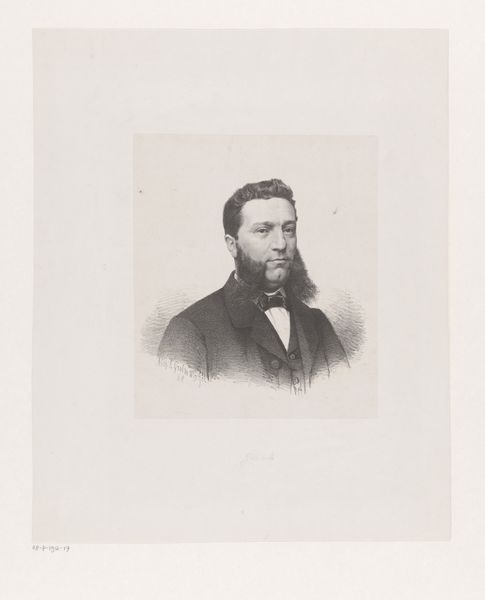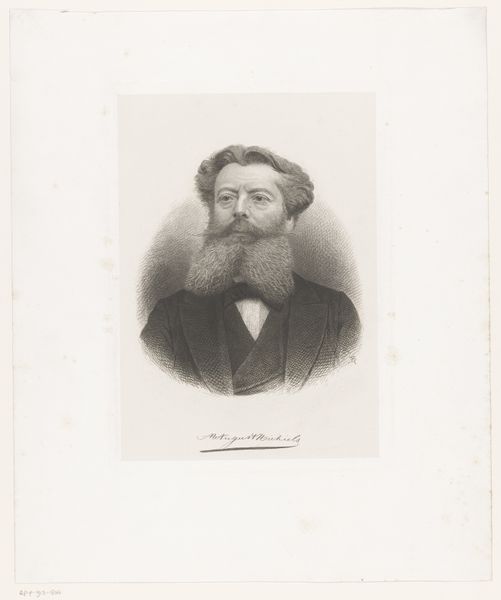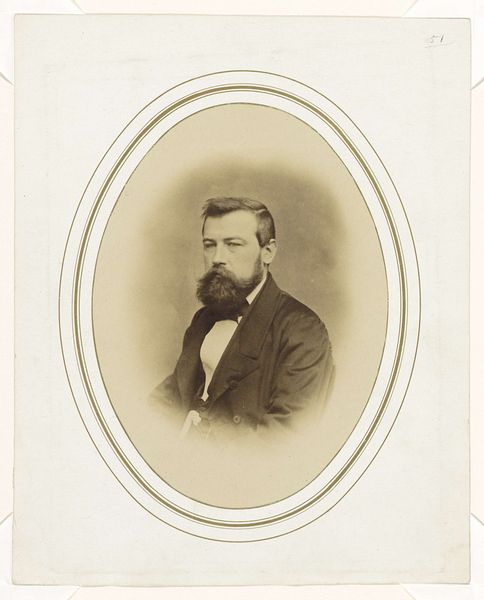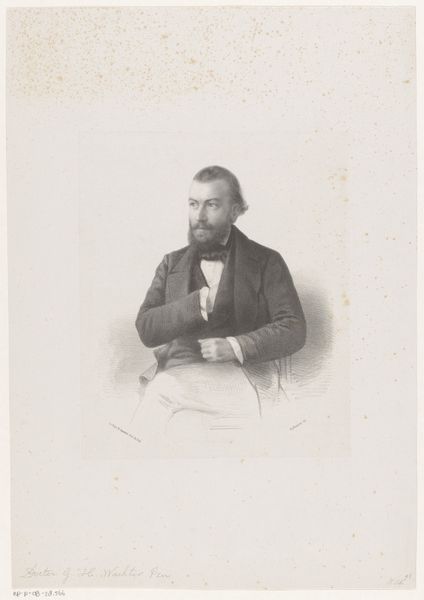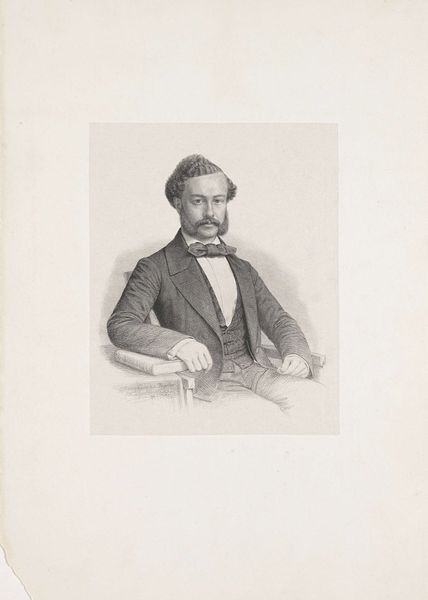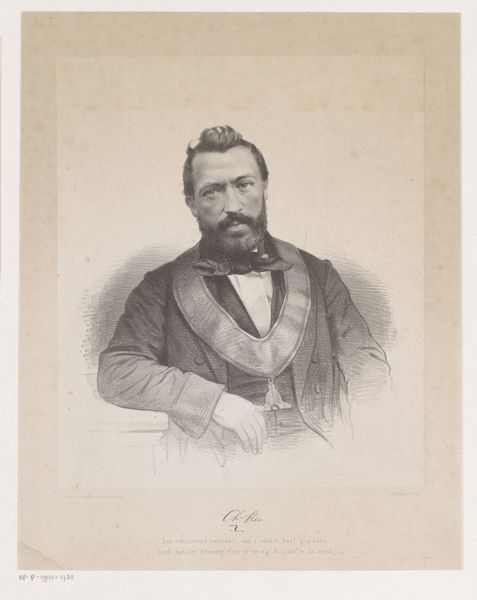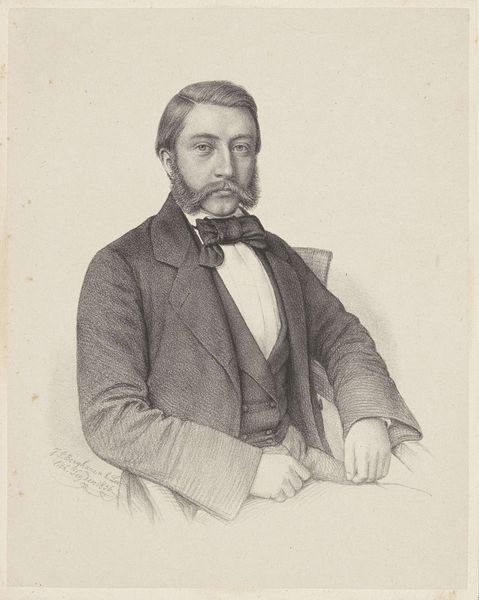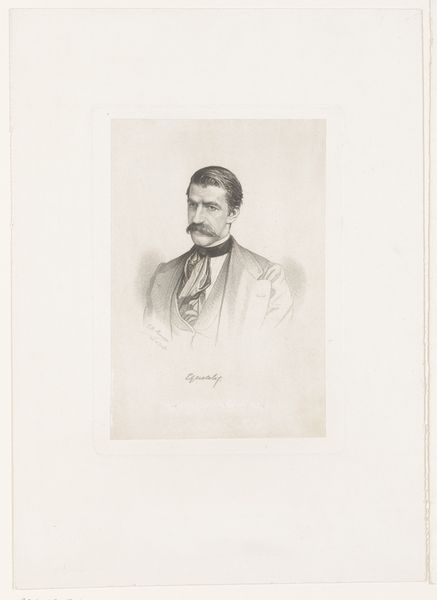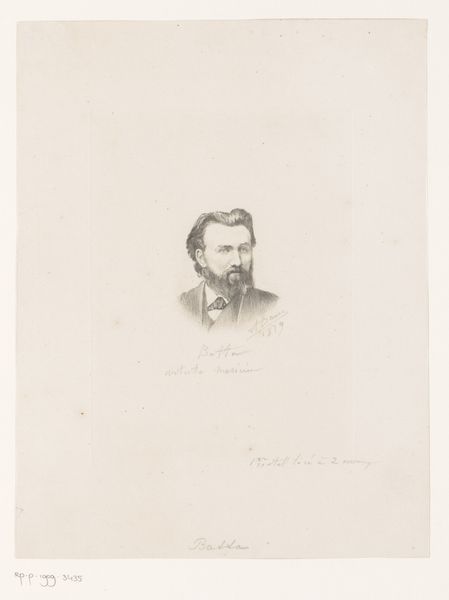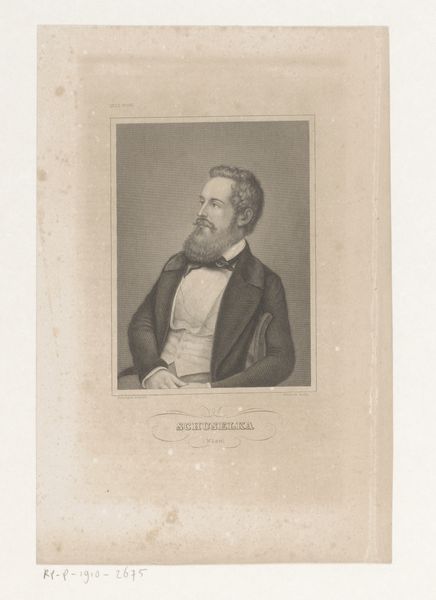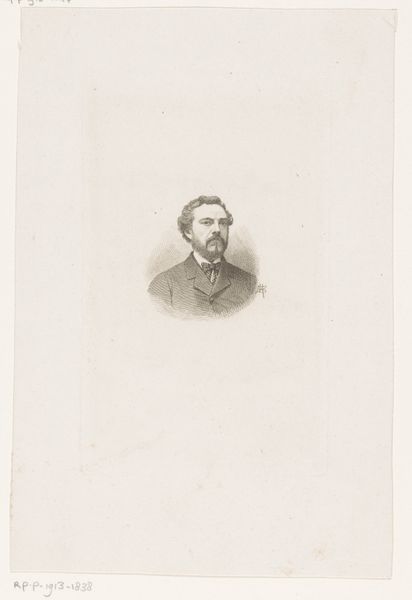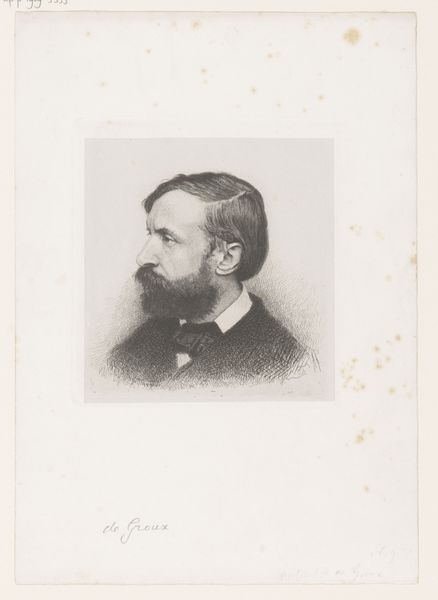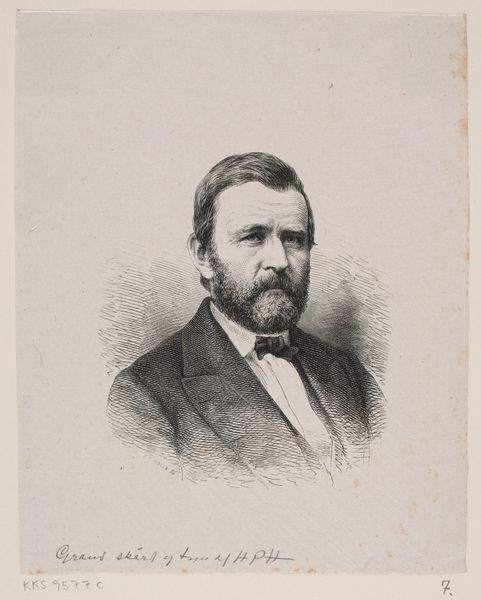
drawing, graphite
#
portrait
#
drawing
#
pencil drawing
#
graphite
#
realism
Dimensions: height 87 mm, width 62 mm
Copyright: Rijks Museum: Open Domain
Curator: This is a graphite drawing from the 19th century titled "Zelfportret" attributed to Georg Otto. It’s rendered in the style of realism and is a self-portrait. What’s your initial impression? Editor: Brooding. There's a distinct weight in his eyes, amplified by the medium itself—graphite conveying a sense of thoughtful constraint. Curator: Given the social history of portraiture, and self-portraiture, specifically in the 19th century, the artist's choices become a mode of self-assertion. What kind of societal performance is at play here? Editor: I’d say this piece reflects the complex dynamic between individual identity and social expectation, characteristic of the Realism movement in Europe. It appears that Otto wanted to convey an image of respectable, perhaps even intellectual middle class. The clothing, for instance, reads a bit like visual signaling for his target demographic. Curator: I see that. Consider then the act of rendering himself with such intense gaze in a pencil drawing. Is he resisting the grand, heroic portraiture prevalent then? Or is this medium perhaps related to limited access to more durable media due to his place in society? Editor: It could be a comment on accessibility in the art world but at the same time, graphite allowed for a unique level of detail, right? Detail crucial to communicating his internal state, even if subdued. The very act of staring back at the viewer, directly, claims a certain power. Curator: A power claim perhaps interwoven with anxiety as rapid industrial and social change increasingly questioned traditional power structures and definitions of identity? This may very well signal awareness, not just presentation. Editor: I think that's right. Ultimately, a deeper reading needs to consider that visual statements, whether of status or doubt, often became enmeshed with those broader upheavals. This piece feels right at that intersection. Curator: Precisely, it speaks to the turbulent formation of a modern self, caught between tradition and transformation. Thank you for your input! Editor: It's been illuminating for me, too, recontextualizing his work as part of a greater history.
Comments
No comments
Be the first to comment and join the conversation on the ultimate creative platform.
